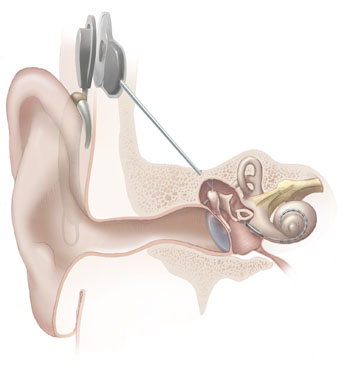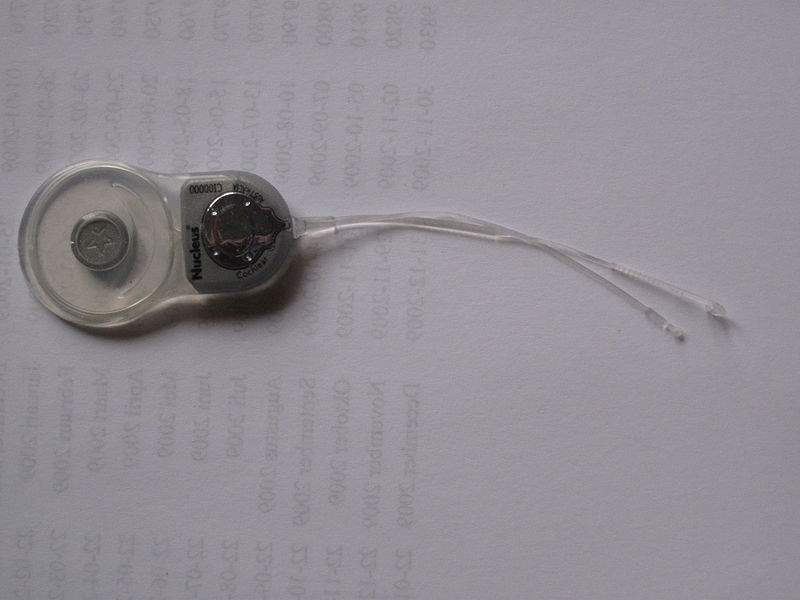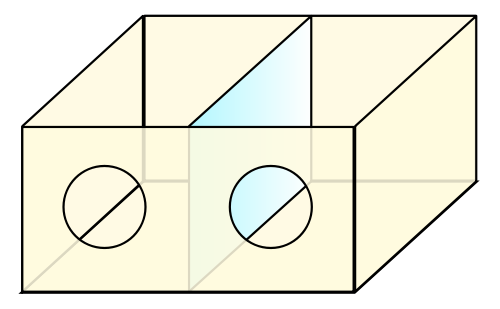Added 1 new A* page:"A* manages to create depth without cluttering its panels, and makes use of what I'd have to call a cinematic composition to great effect. If you are a black-and-white enthusiast, this comic will thrill you. if you're a b/w artist, school is in session."
-- Sam Medina, Jake the Evil Hare and Darkfell |
I made a new little button icon for A*!

Innit cute? You can use it...well, wherever you like, if you want. *I'm* using it for a new advertising campaign, whee!
~~~~~
I call A* "hard" science fiction, and exactly what that means sometimes varies by interpretation, but here I generally mean that it restricts itself to things that could happen without violating scientifically established laws of the known universe. So you won't see faster-than-light travel or handheld death rays here, for instance.
Those are just the easy, obvious ones to avoid, though. Sometimes I get a little nervous about more marginal things--things that maybe don't outright break the laws of science as we know them, but that make you wonder "would that *really* be possible, even given centuries of technological advance?" Or at least, sometimes they make me wonder about it.
Fortunately, sometimes it turns out that I may have guessed right. One thing I was worrying about along hard science lines, you see, were Selenis' neural implants; you could be forgiven for not realizing she has such bionic-woman-sounding things, since I haven't emphasized them unduly; maybe the closest I came was Solvan Mar admiring her "neuro implants" (not sure why I had him say it with quite that spelling now, hm) back in episode 11, after he'd just seen her shoot a man ambushing her from behind, without even looking at him. Later in that same scene, she hints that she may have used them to tell if Mar was lying to her, calling them "my sensors." And it may not have been obvious, but moments later, she used them yet again, to know when the man behind her, whom she had shot earlier, was reviving, and then turning to fire at her.
And of course she uses some sort of implant simply to "talk" to her managing computer program, which she calls "mother," without moving her lips--and, similarly, to hear Mother talking to her.
So I got to wondering... Implanted sensors? Meaningful artificial stimulation of inner sensory receptors? Have I gone too far, or could that stuff actually happen?
Well, once I ask myself that kind of question I just can't sleep until I've solved it, so of course I went trolling around Wikipedia to see what I could turn up. And fortunately, it appears that I didn't go too far from the conceivably possible with these things.
Let's take the relatively simple example of Mother talking into Selenis' head. In a way, I'd like to think that that's a direct radio transmission of (compressed and encrypted, of course) text to a receiver in Selenis' head that unscrambles it, converts it into the equivalent brainwave pattern that comprehends those words, and zaps that directly into Selenis' brain synapses. Which I think is probably within the realm of possibility--but for now let's keep it simple; let's say Mother's speech is translated into sound waves--text to speech, you can do that on Google Translate right now! (or any of umpteen other places on the Internet, but the Google one has a lot of language options, and I get oh so simply amused by the way their English voice translation renders naughty words :P)--and these are sent--we don't want to do this with a tiny speaker in Selenis' inner ear or something, mind you, since that could potentially be overheard by listening devices--by electrical impulse directly into the nerves Selenis uses for hearing. Could that work?
Apparently it could, because over 150,000 people here on Earth already have such a "neural implant"--that's my silly phrase, mind you; these very real implants are called cochlear implants, and they use a tiny microphone to pick up external sounds, which are then run through a speech processor to isolate the parts that are probably audible speech, and translate those into electrical impulse patterns comprehensible to the nervous system; those are then sent into the body, down a wire to electrodes running into the wearer's cochlea, the auditory portion of the inner ear; the pulsating electrical field produced there by the electrodes stimulates the user's auditory--or "cochlear"--nerve, which passes the signal along into the brain, where it is re-interpreted as sound.
Here's a diagram of the internal and external parts of a typical cochlear implant:

image by National Institutes of Health (source)
and here's what the surgically implanted portion of one type looks like on its own:

image by Edwtie (source)
And here's a simulation of what speech might "sound" like through a cochlear implant. Spooky!
So I think we're well covered as far as Mother speaking straight into Selenis' head goes. As for Selenis speaking back, and doing other things with those "neural implants," that gets a little more complicated, and I will save that for...maybe next time! It gets into neuroscience, you know (ohh, *that's* probably where I got that "neuro" spelling from...hm I guess that's okay then :P), which has quite a few unsolved problems--a breeding ground and potentially deadly minefield for all sorts of "hard" sci-fi ideas! (I suppose there are probably brands of hard science fiction that only consider stuff that has definitely been proven to work--that doesn't really leave enough room for the fun "fiction" part of it though, if you ask me. :P)
~~~~~~
And I'm just going to sneak something in here that I stumbled across in looking through some of this stuff: the mirror box. It's a simple mirror trick, but it can, apparently, be used to cure or at least reduce phantom limb pain in people who have lost a limb, particularly if it was paralyzed before removal. The theory goes that when it was paralyzed, the victim tried to move it, and received sensory feedback that it didn't move. This sense of being unable to move the paralyzed limb stamps itself into the brain, but then, if phantom nerve sensations after amputation tell the person that the (missing) arm is in a painful position, they're still convinced that they're unable to move it, even in phantom form, and the pain continues as a phantom cramp.
So! The mirror box:

image by Phidauex (source)
The user sticks their good hand into the side with the mirror, and the stump of the other (or maybe just as much as they imagine of it?) into the other side, and then they look at the reflected image of the good hand; mirrored, it now looks like the *other,* missing hand, and in some cases the user is then able mentally to unclench or reposition the phantom limb to a more comfortable phantom position, easing the phantom limb pain.
Neuroscience is pretty crazy stuff sometimes.
~~~~~~
Oh, and I forgot to mention that the pioneering research that eventually led to cochlear devices was a stunt way back in 1790 by Alessandro Volta, the Italian physicist who a decade later would invent the battery: he "placed metal rods in his own ears and connected them to a 50-volt circuit, experiencing a jolt and hearing a noise 'like a thick boiling soup.'" Eek! Well, I hear a buzzing inside my ear when there's no other sound around, but I think that's just because I listened to music too loud or something...and it certainly didn't lead me to the discovery that electrical stimulation of the auditory system can produce the perception of sound, like Volta's trick with the rods did.
Although now I wonder if that did leave him with a buzzing sound. :P
|
